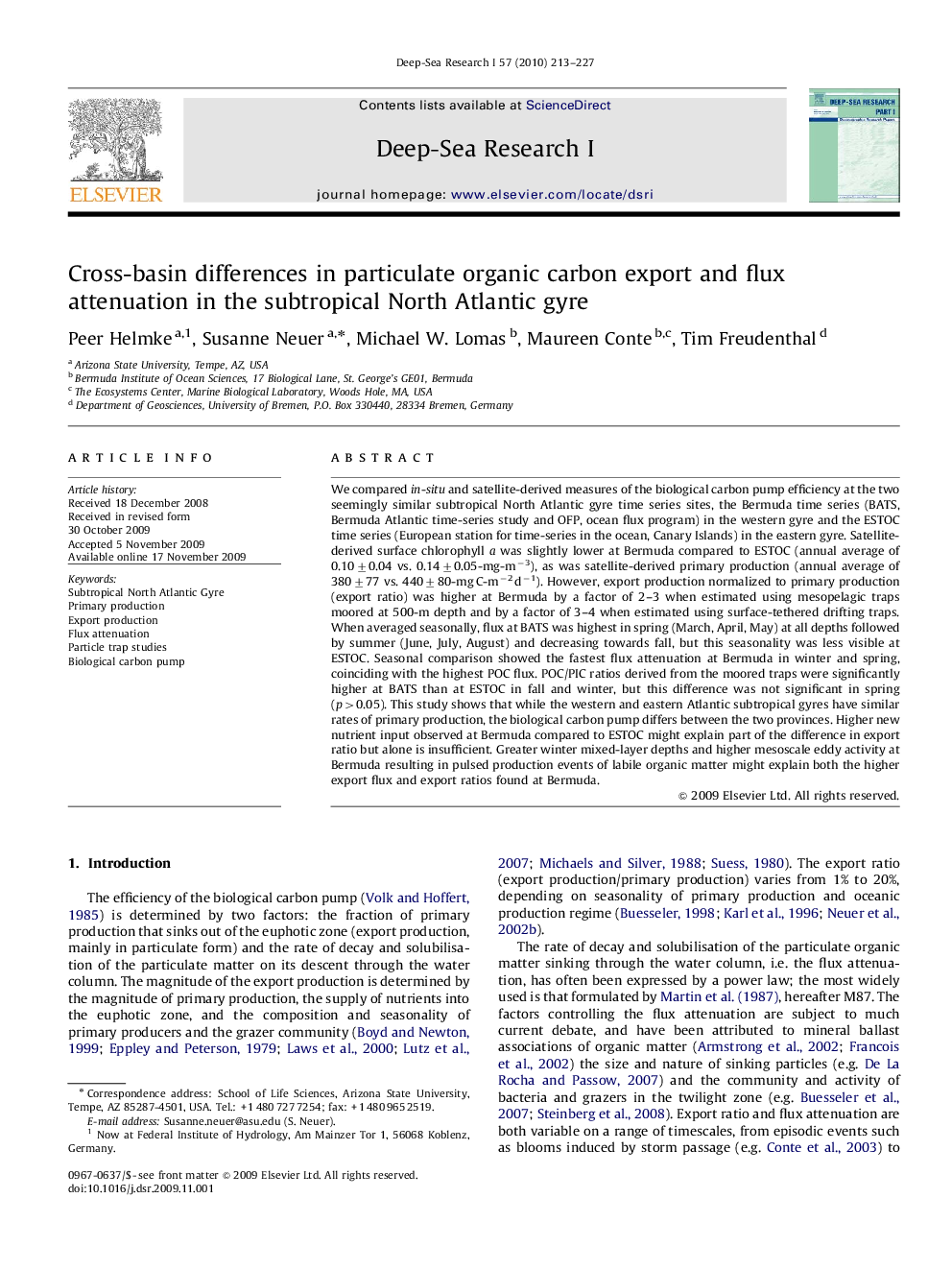| Article ID | Journal | Published Year | Pages | File Type |
|---|---|---|---|---|
| 4534897 | Deep Sea Research Part I: Oceanographic Research Papers | 2010 | 15 Pages |
Abstract
We compared in-situ and satellite-derived measures of the biological carbon pump efficiency at the two seemingly similar subtropical North Atlantic gyre time series sites, the Bermuda time series (BATS, Bermuda Atlantic time-series study and OFP, ocean flux program) in the western gyre and the ESTOC time series (European station for time-series in the ocean, Canary Islands) in the eastern gyre. Satellite-derived surface chlorophyll a was slightly lower at Bermuda compared to ESTOC (annual average of 0.10±0.04 vs. 0.14±0.05-mg-mâ3), as was satellite-derived primary production (annual average of 380±77 vs. 440±80-mg C-mâ2 dâ1). However, export production normalized to primary production (export ratio) was higher at Bermuda by a factor of 2-3 when estimated using mesopelagic traps moored at 500-m depth and by a factor of 3-4 when estimated using surface-tethered drifting traps. When averaged seasonally, flux at BATS was highest in spring (March, April, May) at all depths followed by summer (June, July, August) and decreasing towards fall, but this seasonality was less visible at ESTOC. Seasonal comparison showed the fastest flux attenuation at Bermuda in winter and spring, coinciding with the highest POC flux. POC/PIC ratios derived from the moored traps were significantly higher at BATS than at ESTOC in fall and winter, but this difference was not significant in spring (p>0.05). This study shows that while the western and eastern Atlantic subtropical gyres have similar rates of primary production, the biological carbon pump differs between the two provinces. Higher new nutrient input observed at Bermuda compared to ESTOC might explain part of the difference in export ratio but alone is insufficient. Greater winter mixed-layer depths and higher mesoscale eddy activity at Bermuda resulting in pulsed production events of labile organic matter might explain both the higher export flux and export ratios found at Bermuda.
Related Topics
Physical Sciences and Engineering
Earth and Planetary Sciences
Geology
Authors
Peer Helmke, Susanne Neuer, Michael W. Lomas, Maureen Conte, Tim Freudenthal,
